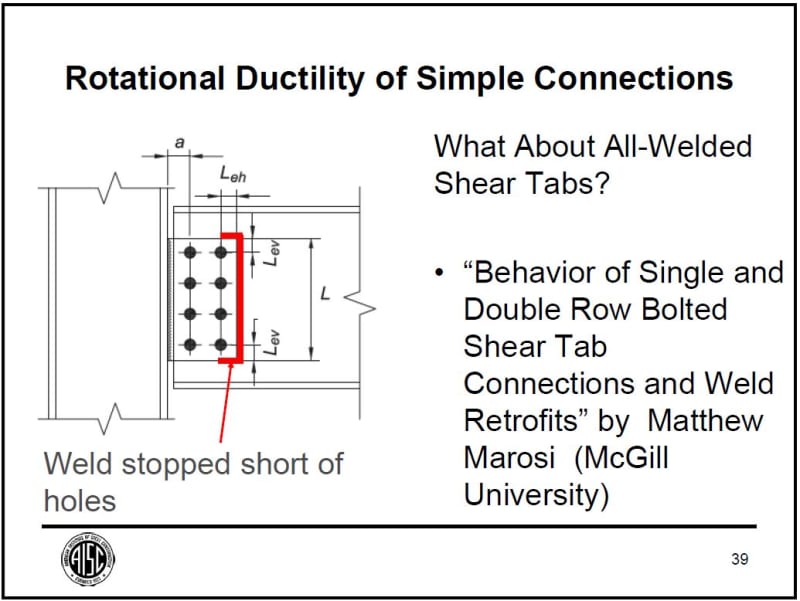Cal001
Structural
- May 29, 2020
- 2
Hello
I am just curious and want to get your input into the following connection where the shear tab is welded all around with the beam web.
1) Is it allowed by the code
2) Are there any fabrication issues with shop welding
3) For design of this weld configuration i.e for shear capacity of weld all around (with Vertical shear and axial tension) can we use Table 8-6 AISC 13th edition, or would it be safe bet to consider C- shaped weld and use table 8-8
4) How about the check for the beam web (base metal check. Can we assume the beam web with weld all around.
I am just curious and want to get your input into the following connection where the shear tab is welded all around with the beam web.
1) Is it allowed by the code
2) Are there any fabrication issues with shop welding
3) For design of this weld configuration i.e for shear capacity of weld all around (with Vertical shear and axial tension) can we use Table 8-6 AISC 13th edition, or would it be safe bet to consider C- shaped weld and use table 8-8
4) How about the check for the beam web (base metal check. Can we assume the beam web with weld all around.

